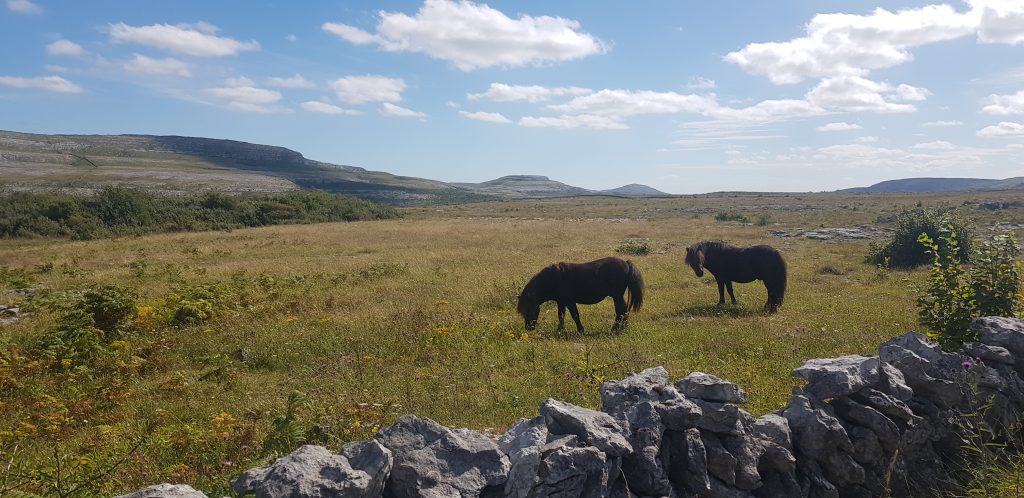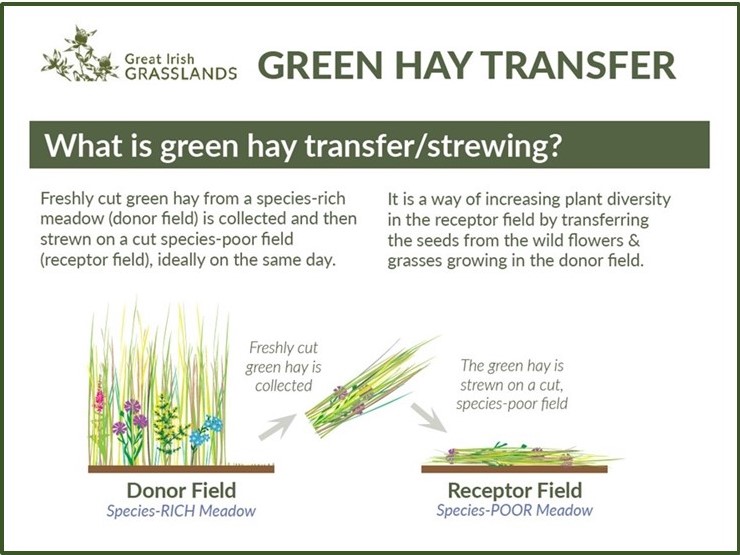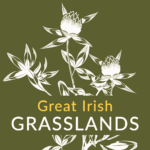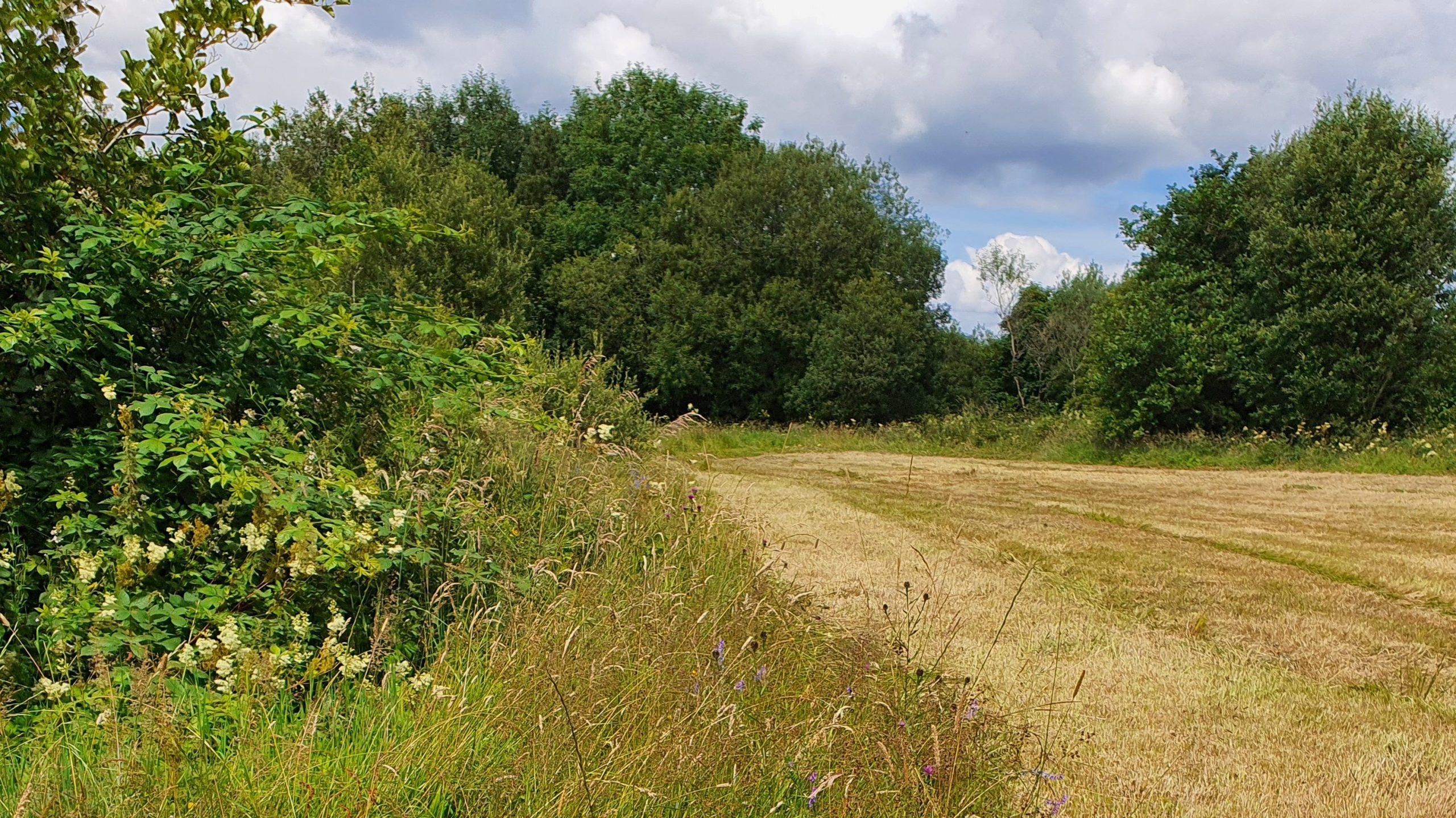All grasslands need some management either by grazing or cutting. As an example, here are some ponies which are lightly summer grazing the orchid-rich calcareous grassland of the Burren National Park.

Some key principles for managing semi-natural grasslands.
Nutrients
On sites with high nutrient levels (e.g. heavily fertilised grasslands), a small number of grass species will dominate, along with plants like thistles and docks. These species thrive when nutrient levels are high, and squeeze out many other species. If you want floral diversity, nutrient levels must be lowered.
- Avoid or reduce fertiliser.
- Remove all cuttings if the area is mown. The cuttings are like a layer of compost if left on site.
Grazing
If the grassland is pasture, rather than meadow, then the species and breed of grazer will have an impact.
- Sheep graze grasslands tight. Cattle and horses create more diversity of structure. Goats are great for managing scrub but can be hard work to fence in!
- Traditional breeds of stock can have many benefits such as being lighter (less poaching), hardier (less vet bills, less need to house in winter), and some even thrive on rough vegetation (less need to supplementary feed).
Timing
If grasslands are mown or grazed at the height of summer, then many species don’t get to flower or set seed.
- Winter-grazing is ideal for dry sites but may not always be practical.
- Mowing in late summer allows many plants and invertebrates to have completed their life cycle. But like many things, a diversity of mowing times is also beneficial – having an earlier cut the odd year is no harm!
- Using a combination of mowing and grazing can be very beneficial.
Advice
Always get appropriate advice – this is likely to come from more than one source. Depending on your starting point (e.g. abandoned scrubby area, intensive agricultural grassland), management needs will differ, at least initially, making relevant advice even more important.
- Consider speaking to an ecologist.
- Find a nearby farmer who already does what you’d like to do and ask them for advice. ‘Farming for Nature’ has lists of such farmers, along with farm visits which are highly recommended.
- Explore some of the resources provided at the end of this booklet.
Expectations
When managing or restoring a semi-natural grassland, the aim should always be a diverse and well-functioning grassland, rather than a showy sward. A typical and healthy grassland is, perhaps unsurprisingly, grassy!
- Rest assured, a healthy grassland will be excellent for pollinators, other invertebrates, and a range of other biodiversity, and it will be humming with life, especially in summer.
- There will be a good mix of native grass and other plant species, but it may look green, brown or messy, rather than flowery all the time.
- It may look a little ‘boring’ to some eyes (but not the creatures that use it), and it may look untidy, particularly at certain times of the year – hence managing expectations is key.
- We all need to re-calibrate a little, and appreciate the beauty and wonder in the ordinary.
Using Green Hay Transfer
A relatively novel approach to grassland restoration is via the use of ‘Green Hay’. This technique involves freshly cut green hay from a species-rich meadow (donor field) being collected and then strewn on a cut species-poor field (receptor field), ideally on the same day. This method is a way of increasing plant diversity in the receptor field by transferring the seeds from the wild flowers & grasses growing in the donor field. Read more about it by clicking on the image below to download our information leaflet.


